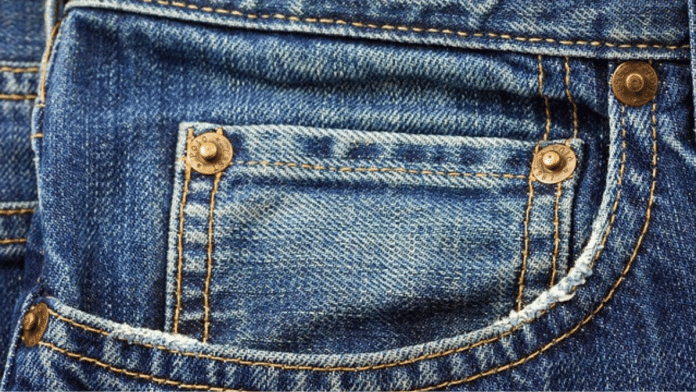In the dizzying world of women’s fashion, high-street and haute couture, pockets are irrelevant. Well, here’s a news flash. Women need pockets in their outfits–ASAP.
And not pockets that can barely hold a few coins or bulge if more than three Rs 10 coins are stuffed into them. We need pockets that accommodate our hands, cellphones, and other mundane items that we need on hand. They can actually prevent phones from being snatched away by thieves on the road. It would also not necessitate holding a bag.
But pockets and patriarchy seem to go hand-in-hand, with fashion doing little to bridge the divide. The freedom to walk without a bag has been sacrificed at the altar of fashion.
Most women cannot leave their homes without a handbag to store keys, a phone, some tissue paper. Men, on the contrary, can stuff the pockets of their shirts and pants with all sorts of odds and ends without judgement.
Even if I do not want to carry a big tote bag to cram stuff, often I have to. And now, even handbags are getting tinier and more expensive. It appears as if it’s the reverse of evolution when it comes to women’s fashion. From tall heels that give backache to tiny bags that barely hold anything to lack of pockets, the utility factor is constantly being overpowered by some morbid idea of fashion that is incomprehensible.
What is even worse is fake pockets. They’re there in jeans and dresses–illusions to appeal to the silhouette without the practicality of it. That can really increase the rage situation to a hundred.
Adding insult to injury is the increased price when there are pockets in a dress. Even if big designers add pockets to their cargoes or evening dresses, it hardly solves the problem. How many people can afford these outfits? More importantly, how many times will a woman wear the same outfit, simply for the sake of pockets? It is not supposed to be a bespoke fashion moment but an everyday pragmatic one.
In fact, it prompted author Hannah Carlson to write an entire book titled Pockets: An Intimate History of How We Keep Things Close.
A brief history of pockets
Pockets are deeply rooted in patriarchy. It’s political. It was only by the late 17th century that pockets were increasingly incorporated into men’s clothing. They were added to suits, coats, waistcoats and trousers. But they were always absent in women’s apparel.
The reasons are steeped in misogyny. Women need to look ‘delicate’, which means no unseemly ‘bulges’ on their bodies. What would women even keep in their pockets, considering their husbands are the breadwinners? They can use their hands to carry a reticule instead. Some were sewn under petticoats and panniers where women would secrete essentials like keys, spectacles, combs, and money.
Women wearing clothes with pockets—especially hidden ones—were viewed with suspicion. During the turbulent years of the French Revolution, internal and external pockets were banned from women’s clothing. The idea was to prevent them from carrying revolutionary material.
The lack of pockets also means that one really doesn’t know what to do with one’s hands while posing for photos. Men get that one standard hand-in-pocket pose. Why should women not get that option?
Coco Chanel attempted to change this by incorporating pockets in her clothes. She popularised the slouch among women—they could put their hands in their pockets the way men had been doing all these years.
During World War I, practical clothing became the norm and the suffrage movement saw pockets become a symbol of women’s freedom. There were manuals on how to sew proper pockets. But the movement was short-lived. As women’s clothes got tighter, pockets started getting smaller and smaller–until they disappeared again.
Speaking out
Today, entrepreneurs and designers have not just spoken out but also tried to start the change with their own labels.
India’s Jayalakshmi Ranjith has started a clothing brand that actively includes pockets in her clothing line. Other brands, which are homegrown, like Okhai or Why So Blue, also include pockets in their women’s clothing items.
An Indian entrepreneur based in Seattle said in an interview that pockets are the ‘superpower’ of their clothing collection.
“Only 5 per cent of women’s pockets can fit a smartphone, compared to 85 per cent of men’s pockets. On average, women’s pockets are 48 per cent shorter and 6.5 per cent narrower than men’s pockets,” said Aditi Sinha, the co-founder of Seattle-based women’s workwear label Point of View, told Seattle Refined.
Views are personal.
(Edited by Humra Laeeq)






